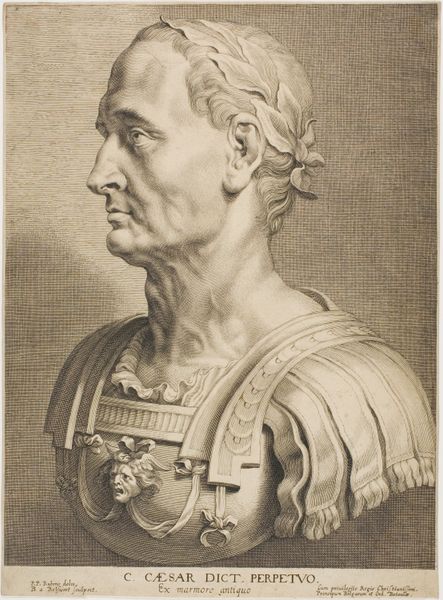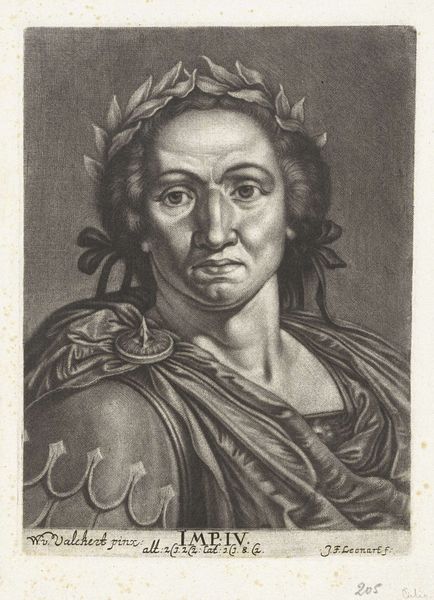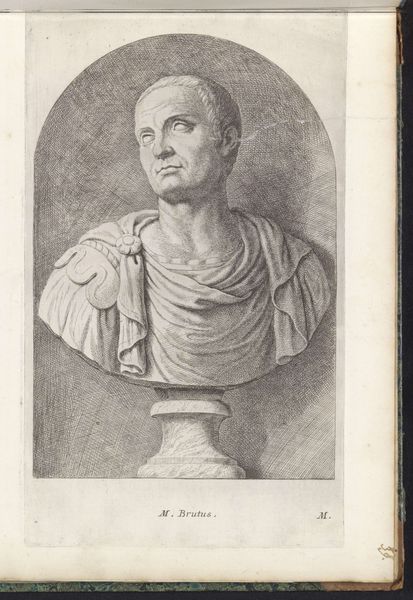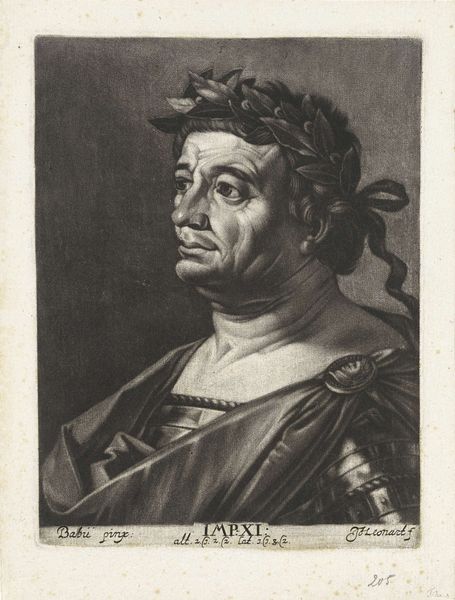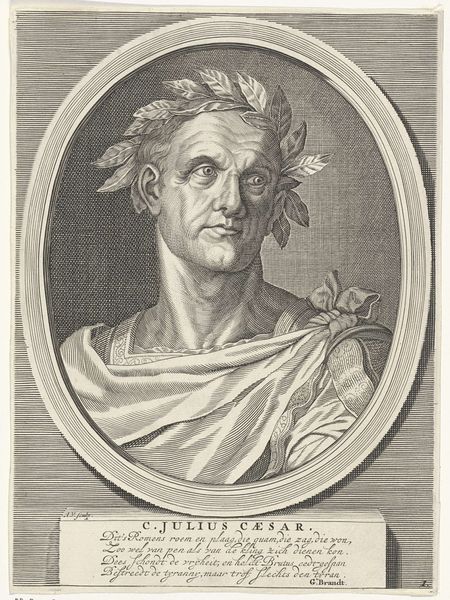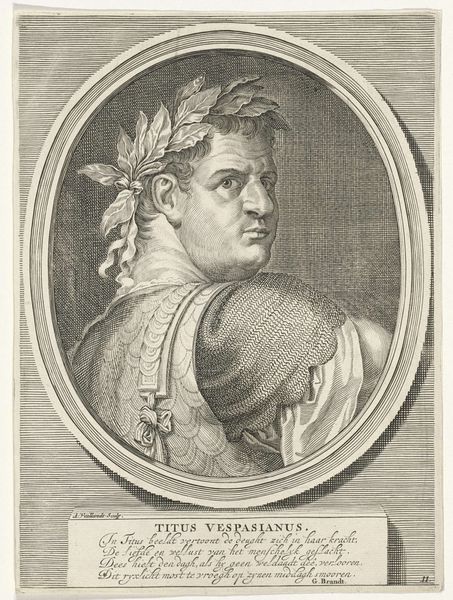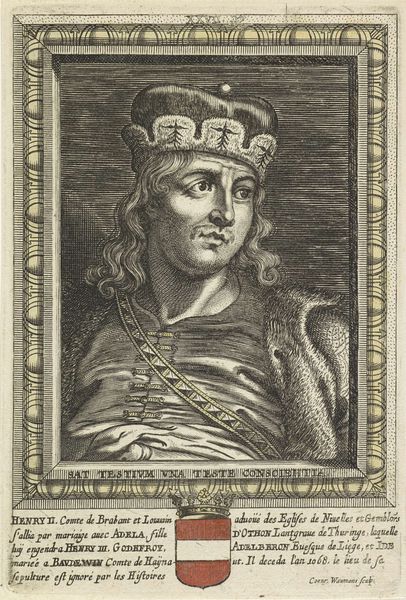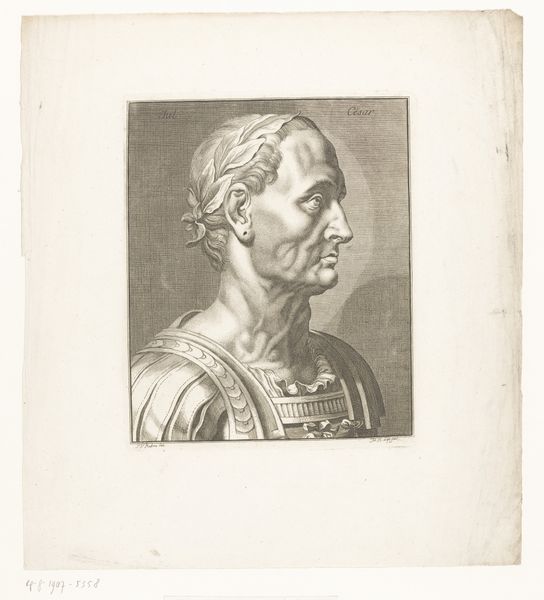
print, metal, etching
#
portrait
#
baroque
# print
#
metal
#
etching
#
ancient-mediterranean
#
history-painting
Dimensions: height 169 mm, width 120 mm
Copyright: Rijks Museum: Open Domain
Editor: Here we have Johann Friedrich Leonard’s etching, “Portret van keizer Galba,” made sometime between 1643 and 1680. It's incredibly detailed, particularly the rendering of Galba's armor and laurel wreath. The material quality comes through really strongly. How should we interpret the use of metal etching in depicting a Roman emperor? Curator: Look at the lines themselves – etched, precise, repeatable. It's a form of mass production even then. Doesn’t the choice of printmaking for the Emperor’s portrait complicate notions of power and access? An oil painting might elevate Galba. But this *print* democratizes his image, making it available for wider circulation. What impact do you think this has? Editor: So the medium flattens some of that historical distance between ruler and subject, making the figure less divine. I'd imagine that an easily reproduced image also turns the portrait into a commodity... Curator: Exactly. And consider what it means to recreate an “ancient” subject with this technology. How does that interplay speak to Early Modern Europe’s relationship to antiquity? They're literally impressing the image of a former ruler, claiming authority. It's an act of production, both artistic and political, that's worth unpacking. Who controlled the production of these materials? Who would have purchased them? Editor: Thinking about the social and material life of this print offers an entirely new way to engage with history... the making *is* the meaning. Curator: Precisely. It transforms the artwork into more than just an aesthetic object. It's evidence of a specific moment, a specific social framework of production and consumption. Editor: I hadn't considered the implications of printmaking in relation to portraying power, but it definitely changes my perspective. Curator: These early prints allow us to explore material interactions from early global networks, expanding beyond aesthetics, and illuminating complex interconnections across regions.
Comments
No comments
Be the first to comment and join the conversation on the ultimate creative platform.

